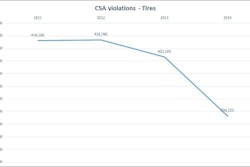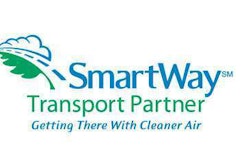On August 16 the Environmental Protection Agency (EPA) and National Highway Transportation Safety Administration (NHTSA) jointly released their final rules for the next round of greenhouse gas emission and fuel economy standards for medium- and heavy-duty vehicles.
Just a few days later, the questions from readers started pouring in.
In an effort to be efficient and informative, I thought it would be best to answer as many as possible in this space.
Apologies in advance if I don’t get to your question, but with only one page to recap a nearly 1,700-page document, there is no way I can get to everything.
How do these regulations impact current standards?
The simple answer here is they don’t.
The new regulations released last month are Phase 2 of the EPA and NHTSA’s joint regulations. They have been written specifically to stack on top of the Phase 1 regulations in place today, and will require no alterations to Phase 1’s current and future regulations that were introduced late last decade.
“The Phase 2 standards will maintain the underlying regulatory structure developed in the Phase 1 program, such as the general categorization of [medium-duty] and [heavy-duty vehicles] and the separate standards for vehicles and engines,” regulators say.
The final round of Phase 1 regulations will go into effect with model year (MY) 2017 engines—most of which manufacturers have already introduced in the marketplace—and Phase 2’s regulations will begin with rules for trailers in MY 2018. The first engines and tractor regulations will take effect in 2021.
What equipment is impacted by the regulations?
Unlike Phase 1, which required only engine alterations to meet new emission and fuel economy standards, Phase 2 requires full-scale changes.
In addition to engines, new standards also have been developed for “combination tractors; trailers used in combination with those tractors; heavy-duty pickup trucks and vans; and vocational vehicles.”
In adding equipment to the greater regulations, the EPA and NHTSA believe Phase 2’s final rule will lower CO2 emissions by approximately 1.1 billion metric tons and save vehicle owners about $170 billion in fuel costs over the life of the program.
Why was this necessary?
I received a few variations of this question.
The two reasons regulators point to are conservation and safety.
Reducing our reliance on fossil fuels is a priority not just for the Federal government but for fleets as well. Every truck owner in North America searches for ways to lower fuel costs. Both Phase 1 and Phase 2 provide that—though admittedly with an additional up-front cost.
The emission standards are a safety feature. The EPA has identified commercial vehicle emissions as an obstacle in improving air quality nationwide and has made it a focus.
How will these new regulations impact my customers?
That depends on your customer base.
If you serve large fleets or government fleets, I’d expect some changes. The good thing is there’s reason to believe the rollout of Phase 2 will be much smoother than Phase 1.
On the engine side, manufacturers are much better prepared for Phase 2 after withstanding Phase 1. And the tractor and trailer standards, while new, are within reach using aerodynamic designs and equipment available in the market today.
Prices for MY 2019 trailers and/or MY 2021 tractors will surely go up, but it’s unlikely they’ll be viewed as cost prohibitive.
If your customer base is rolling with older model year equipment, it’s more likely you’ll need to prepare for Phase 1.
Retail prices for Phase 1 engine-equipped tractors are dropping rapidly. These are your customers’ next trucks. You’ll need to stock the engine and after treatment components to keep them on the road.










